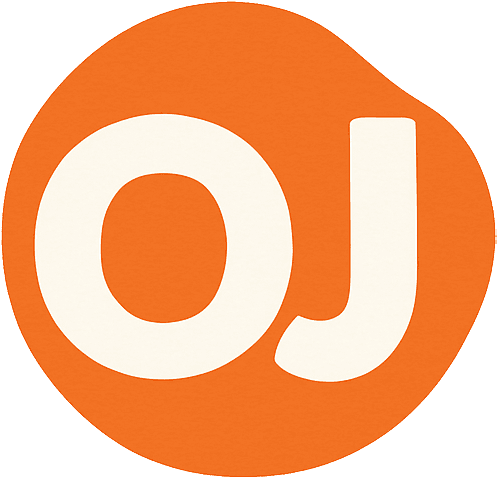
Quick Answer
Focus on value-driven offers like 2-for-1 meals on quiet days, reduce wastage through better stock management, create affordable comfort experiences, and build customer loyalty through personal service. Emphasize community connection over premium pricing.
Recession-Proof Pub Strategies: How to Thrive When Customers Tighten Their Belts
Economic downturns don't have to mean disaster for your pub. While discretionary spending drops during recessions, people still crave community, comfort, and affordable escapism – exactly what pubs provide. The key is adapting your business model to meet changed customer needs while maintaining profitability. Here's your comprehensive guide to not just surviving, but thriving during tough economic times.
Understanding Recession Psychology
Before implementing strategies, understand how customer behavior changes:
-
Value obsession - Every pound must deliver clear worth
-
Comfort seeking - Familiar, reliable experiences win
-
Social proof - Recommendations matter more than ever
-
Local loyalty - Supporting community businesses
-
Experience priority - Memories over material goods
Revenue Optimization Strategies
1. The "Necessities Disguised as Luxuries" Approach
Concept: Position your pub as affordable luxury
Investment: Minimal
Return: 25-30% maintained revenue
Transform perception without raising prices:
-
"Staycation destination" messaging
-
"Cheaper than therapy" humor
-
"Your local living room" comfort
-
"Date night under £30" packages
-
"Payday countdown" promotions
2. Dynamic Pricing Models
Technology Cost: £50-200/month
Revenue Impact: 15-20% optimization
Customer Reception: Positive when transparent
Time-based pricing strategies:
-
Happy hours extended (3-7 pm)
-
Blue Monday all-day discounts
-
Lunch crunch speed service deals
-
Last orders food discounts
-
Weather-based pricing
3. Membership Programs That Work
Setup Cost: £200-500
Monthly Revenue: £2,000-5,000 additional
Retention Rate: 85% member loyalty
Recession-friendly membership tiers:
Bronze (£5/month):
-
10% off all purchases
-
Birthday drink
-
Member-only prices
Silver (£10/month):
-
15% off all purchases
-
Monthly guest pass
-
Priority booking
-
Birthday meal
Gold (£20/month):
-
20% off all purchases
-
Weekly guest pass
-
VIP events access
-
Birthday party package
Cost Management Without Compromise
4. Smart Inventory Management
Savings Potential: 20-30% reduction in waste
Investment: Time and training
Impact on Quality: Improved consistency
Strategies that work:
-
Daily specials using surplus
-
Cross-utilization menus
-
Prep optimization schedules
-
Supplier consolidation deals
-
Waste tracking systems
Example Menu Engineering:
Base ingredients used multiple ways:
-
Roast chicken → Sandwiches → Soup → Salad
-
Potatoes → Mash → Skins → Hash
-
Vegetables → Sides → Soups → Garnishes
5. Energy Efficiency Investments
Initial Cost: £500-2,000
Annual Savings: £2,000-5,000
Payback Period: 6-12 months
High-ROI improvements:
-
LED bulb conversion (£200, saves £800/year)
-
Smart thermostats (£300, saves £1,200/year)
-
Draft excluders (£100, saves £400/year)
-
Timer switches (£150, saves £600/year)
-
Staff energy training (£0, saves £500/year)
6. Staffing Optimization
Approach: Efficiency not cuts
Morale Impact: Positive with transparency
Productivity Gain: 30-40%
Smart scheduling strategies:
-
Cross-training all staff
-
Peak-time focus scheduling
-
Task batching systems
-
Technology assistance (ordering apps)
-
Performance incentives over hours
Menu Strategies for Tough Times
7. The "Comfort Food Renaissance"
Menu Cost: Reduced by 25%
Customer Satisfaction: Increased
Profit Margins: Improved by 15%
Recession-proof menu items:
-
Hearty stews and pies (£2.50 cost, £8.95 sell)
-
Loaded baked potatoes (£1.20 cost, £6.95 sell)
-
Soup and sandwich combos (£1.80 cost, £7.95 sell)
-
Sharing platters (£4 cost, £15.95 sell)
-
"Mum's recipes" nostalgia items
8. The "£5 Menu" Strategy
Concept: Limited but quality ultra-budget options
Customer Draw: New demographics
Upsell Rate: 60% add drinks/sides
Daily £5 specials:
-
Monday: Burger and chips
-
Tuesday: Pasta of the day
-
Wednesday: Curry and rice
-
Thursday: Fish and chips (smaller portion)
-
Friday: Pizza and salad
9. "Feed the Family" Deals
Target: Stressed family budgets
Average Spend: £35-40 (vs £20 lost custom)
Frequency: Drives Sunday-Thursday trade
Package examples:
-
2 adults + 2 kids = £25 (Sunday-Thursday)
-
Kids eat free with adult mains (specific times)
-
Family platter deals
-
"Grandparents eat free" with family
-
School holiday meal deals
Marketing on a Shoestring
10. Community Partnership Programs
Cost: Time investment mainly
Return: 20-30% new customers
Community Value: Immeasurable
Partnership ideas:
-
Local business lunch clubs
-
Charity quiz nights (split proceeds)
-
Community meeting space (free)
-
Local supplier showcases
-
Skill swap networks
11. Referral Programs That Convert
Cost: Absorbed in margins
New Customer Rate: 40% from referrals
Lifetime Value: 2x regular customers
Simple but effective:
-
"Bring a friend, both get 20% off"
-
Punch cards with friend bonuses
-
Social media check-in rewards
-
Review incentives (legal and ethical)
-
Birthday party group discounts
12. Content Marketing for Connection
Cost: £0-50/month
Engagement: 300% increase at The Anchor
Conversion: 15% to visits
Content that resonates in tough times:
-
Budget-friendly recipe shares
-
"Pub quiz at home" downloads
-
Local history features
-
Staff story spotlights
-
Customer celebration posts
Customer Retention Masterclass
13. The "Cheers" Experience
Investment: Staff training
Impact: 40% increase at The Anchor in regular frequency
Cost: Minimal
Creating belonging:
-
Remember names and drinks
-
Reserved "regular" spots
-
Personal milestone celebrations
-
Flexible tabs for trusted customers
-
"Family" treatment
14. Loyalty Programs That Stick
Traditional Stamps: £50 for cards
Digital Options: £20-50/month
Retention Improvement: 60%
Recession-appropriate rewards:
-
Frequency over spend amount
-
Midweek visit bonuses
-
"Tough day" random rewards
-
Group loyalty benefits
-
Essential item discounts
15. Payment Flexibility Options
Risk Management: Essential
Customer Gratitude: High
Implementation: Careful
Considerate approaches:
-
Tab limits for regulars
-
"Payday promise" system
-
Deposit party bookings
-
Loyalty point payments
-
Community support fund
Alternative Revenue Streams
16. Daytime Utilization
Potential Revenue: £500-2,000/week additional
Investment: Minimal adaptation
Market: Growing remote work trend
Opportunities:
-
Co-working space (£5/day)
-
Meeting room hire
-
Coffee and laptop sessions
-
Breakfast clubs
-
Afternoon tea service
17. Retail Opportunities
Margin: 100-200% markup possible
Investment: £200-500 initial stock
Customer Convenience: High
Recession retail wins:
-
Meal kits to cook at home
-
Branded comfort items
-
Local product marketplace
-
Gift vouchers (cash flow)
-
Subscription boxes
18. Experience Packages
Price Point: £15-50 per person
Margin: 70-80%
Booking Rate: High for gifts
Budget-conscious experiences:
-
Cocktail making basics
-
Brewery tour alternatives
-
Quiz master training
-
Cooking classes
-
Wine tasting 101
Financial Resilience Building
19. Cash Flow Management
Daily Disciplines:
-
Cash reconciliation
-
Supplier payment scheduling
-
Revenue forecasting
-
Cost monitoring
-
Break-even awareness
Weekly Reviews:
-
P&L analysis
-
Stock takes
-
Wastage reports
-
Labor cost percentage
-
Utility monitoring
20. Supplier Relationships
Negotiation Potential: 10-20% savings
Payment Terms: Extended possible
Quality Maintenance: Non-negotiable
Strategies:
-
Bulk buying cooperatives
-
Seasonal contracts
-
Loyalty rewards
-
Barter arrangements
-
Local supplier preference
21. Emergency Fund Building
Target: 3 months operating costs
Building Method: 5% of weekly revenue
Usage: True emergencies only
Protection strategies:
-
Separate account
-
Automatic transfers
-
Clear usage rules
-
Regular review
-
Team awareness
Staff Morale During Tough Times
22. Transparent Communication
Frequency: Weekly team meetings
Impact: 90% staff retention
Cost: Time investment
Key messages:
-
Financial realities
-
Everyone's contribution
-
Celebration of wins
-
Idea encouragement
-
Job security honesty
23. Non-Monetary Rewards
Cost: Minimal
Impact: High motivation
Examples: Creative and personal
Recognition ideas:
-
"Employee of the month" privileges
-
Shift choice preferences
-
Public praise
-
Skill development time
-
Family meal invites
24. Team Building on Budget
Cost: £50-100 per event
Frequency: Monthly
ROI: Improved service and sales
Activities:
-
Pub quiz participation
-
Cooking competitions
-
Local volunteering
-
Sports day
-
Mystery pub tours
Marketing Pivots for Recessions
25. Value Communication
Message Focus: Worth not price
Channels: All customer touchpoints
Consistency: Critical
Value propositions:
-
"More than a pint" experiences
-
"Stretch your pound" menus
-
"Community investment" angle
-
"Mental health matters" positioning
-
"Affordable luxury" messaging
26. Partnership Marketing
Cost: Shared with partners
Reach: Combined audiences
Impact: 40% new customer acquisition
Win-win collaborations:
-
Gym + pub recovery meals
-
Cinema + pre-show dinners
-
Shops + shopping break deals
-
Hotels + local dining
-
Events + catering
Measuring Recession Resilience
Key Performance Indicators:
Daily Metrics:
-
Covers served
-
Average spend
-
Cash vs card ratio
-
Stock usage
-
Labor hours
Weekly Analysis:
-
Customer frequency
-
New vs returning
-
Promotion uptake
-
Wastage levels
-
Energy usage
Monthly Reviews:
-
Profit margins
-
Customer feedback
-
Staff turnover
-
Supplier costs
-
Competition analysis
Your Recession Action Plan
Immediate Actions (Week 1):
-
Analyze current costs
-
Survey customer priorities
-
Adjust menu engineering
-
Launch loyalty program
-
Optimize staffing
Short-term (Month 1):
-
Implement value menus
-
Enhance loyalty rewards
-
Launch community partnerships
-
Reduce energy waste
-
Negotiate supplier terms
Medium-term (Quarter 1):
-
Develop revenue streams
-
Build emergency fund
-
Create membership tiers
-
Enhance online presence
-
Measure and adjust
Long-term (Year 1):
-
Build resilient systems
-
Diversify income
-
Strengthen community ties
-
Develop staff skills
-
Prepare for recovery
Common Recession Mistakes to Avoid
-
Cutting quality - Customers notice immediately
-
Stopping marketing - Disappear from consciousness
-
Neglecting maintenance - Creates downward spiral
-
Reducing hours drastically - Lose routine customers
-
Panic pricing - Damages brand value
The Recovery Preparation
While managing the downturn, prepare for recovery:
-
Maintain capabilities
-
Document learnings
-
Build customer database
-
Strengthen systems
-
Plan growth strategies
Remember: Recessions end. The pubs that survive and adapt emerge stronger, with loyal customers and efficient operations. Your role as a community hub becomes even more vital during tough times.
For more strategies, explore our guides on [low-budget marketing](/blog/low-budget-pub-marketing-ideas/) and [midweek promotions](/blog/midweek-pub-offers-that-work/).
How is your pub preparing for economic challenges? Share your strategies and concerns in the comments below.
Frequently Asked Questions
How quickly will I see results?
Most strategies show initial results within 2-4 weeks. Quiz nights attract regulars immediately, social media engagement grows within days, and operational improvements like GP optimization show impact in the first month. Full transformation typically takes 3-6 months of consistent implementation.
How much will this cost to implement?
Implementation costs vary by strategy. Many improvements like social media optimization and operational changes cost nothing beyond time. Events may require £50-200 initial investment. Professional support is available at £75 per hour plus VAT.
Can this work for my type of pub?
Yes, these strategies are proven across wet-led, food-led, and hybrid pubs. The key is adapting the approach to your specific circumstances, customer base, and local market. All strategies come from real-world success at The Anchor.
Do you offer payment plans?
Yes, payment plans are available to help with cash flow. Services are charged at £75 per hour plus VAT. Contact us to discuss a payment arrangement that works for your business.
Do you offer payment plans?
Yes, payment plans are available to help with cash flow. Services are charged at £75 per hour plus VAT. Contact us to discuss a payment arrangement that works for your business.
Need Help Implementing These Ideas?
I've proven these strategies work at The Anchor and will start training other pubs from September 2025. Let's chat about your specific situation - no sales pitch, just licensee to licensee.
Get Help Now
Peter Pitcher
Founder & Licensee
Licensee of The Anchor and founder of Orange Jelly. Helping pubs thrive with proven strategies.
Learn more about Peter →Keep exploring proven tactics
Previously
financial-management • 22 May 2026
Handling Rent and Supplier Negotiations When Cash Is Tight
Handling Rent and Supplier Negotiations When Cash Is Tight Ignoring calls never works. Suppliers escalate to solicitors, landlords change locks, and the stress...
Read articleUp next
operations • 8 May 2026
From Quiet to Buzzing: Rebooting Your Pub's Atmosphere on a Budget
From Quiet to Buzzing: Rebooting Your Pub's Atmosphere on a Budget Empty tables are not always a marketing problem. Often the space simply feels tired,...
Read article